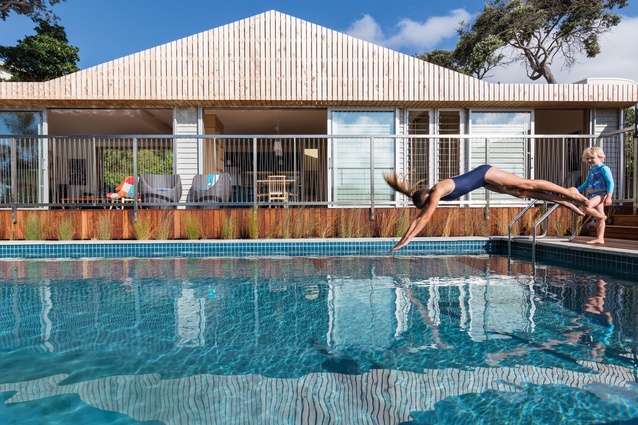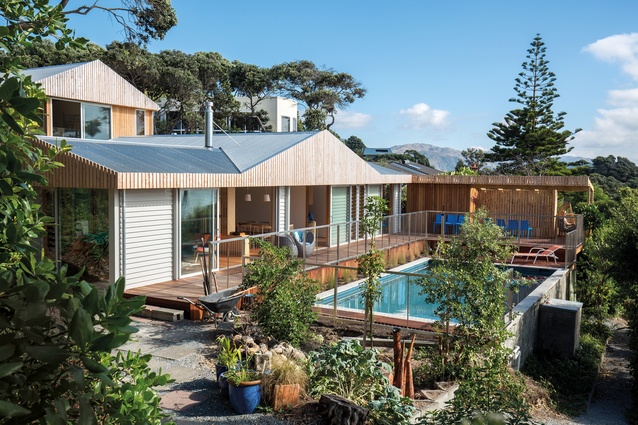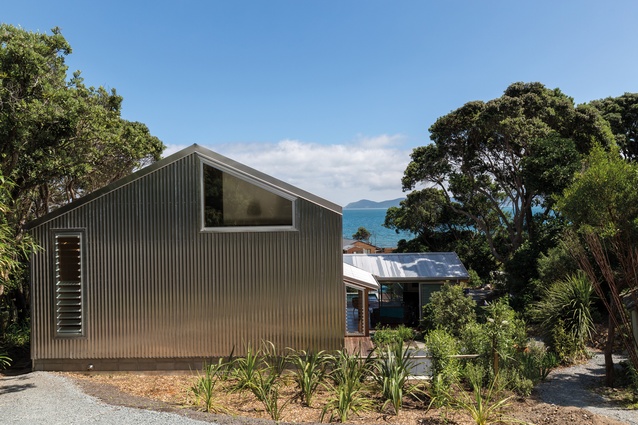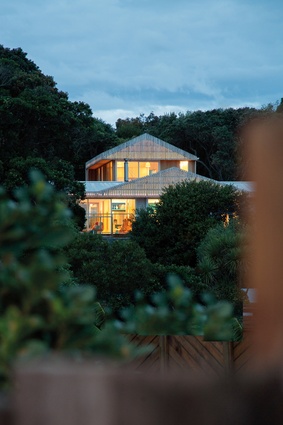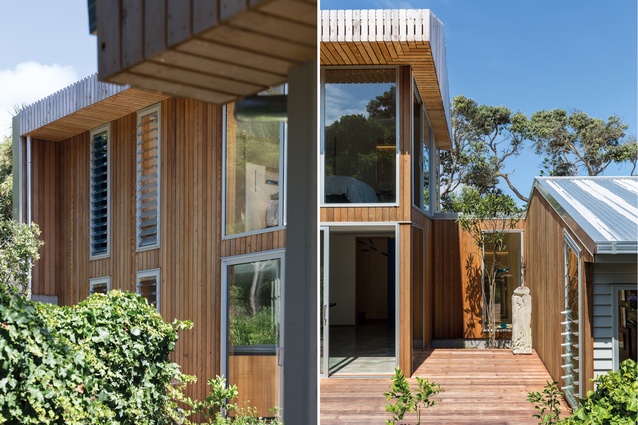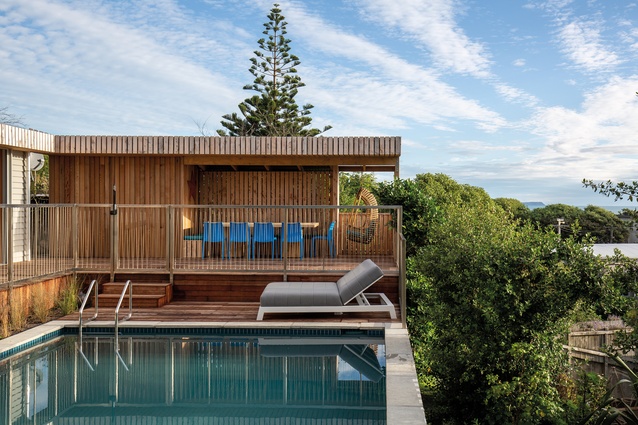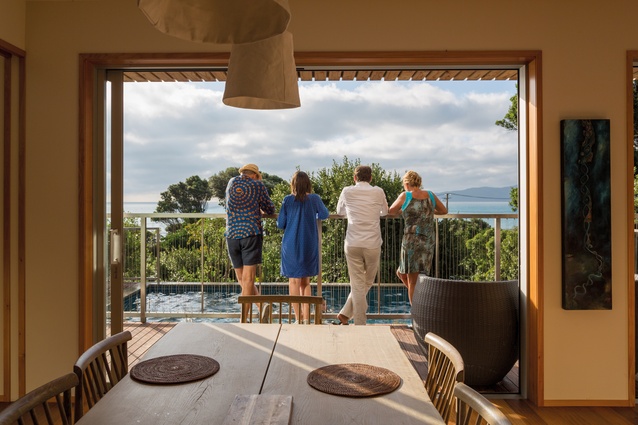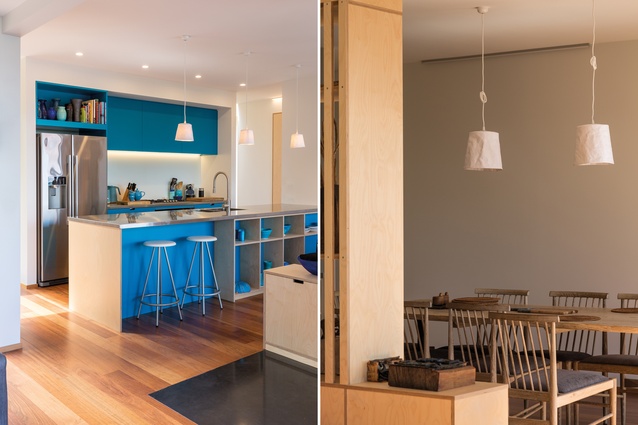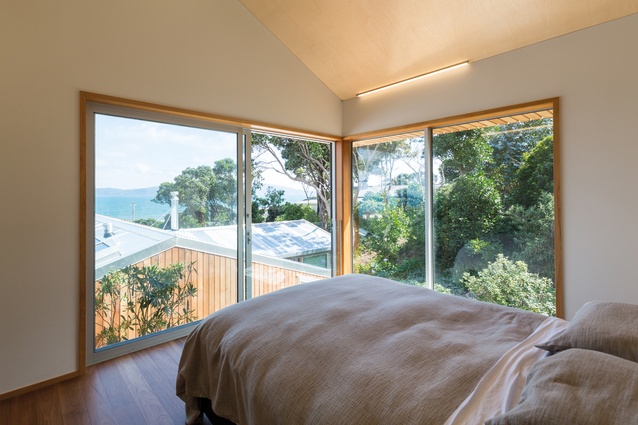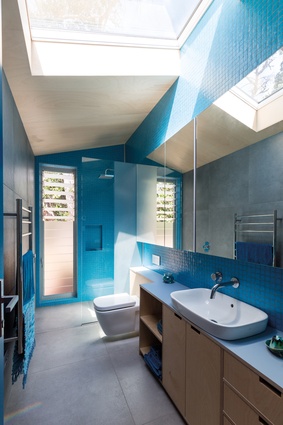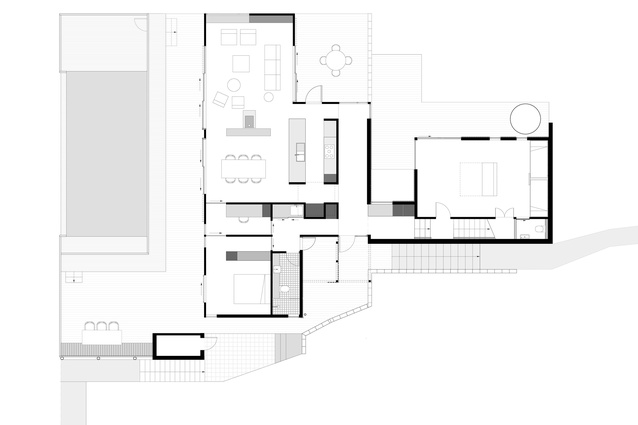Light and colour: Karekare House
An existing cottage has been transformed into a modern home filled with light, colour and stunning views across the Kapiti Coast.
When Deanna and Marcel first saw this site, they were smitten. The potential was enormous. Spread over a couple of titles with several large pohutukawa trees, Karekare House in Raumati is both secluded and sheltered, yet with stunning views out to sea. Sunlight pours in, filtered through the trees.
The existing tired, old weatherboard cottage needed a radical transformation. Cecile Bonnifait from Bonnifait + Giesen Atelierworkshop Architects assures me that “the cottage still exists under here somewhere” but it feels crisp and new. “For us, the choice to work around/within the shell of the existing cottage was a choice to cherish and redevelop the existing ‘patrimoine’ or heritage of the site – here represented by the cottage, the pool and the amazing forest garden that had been created by the previous owner.”
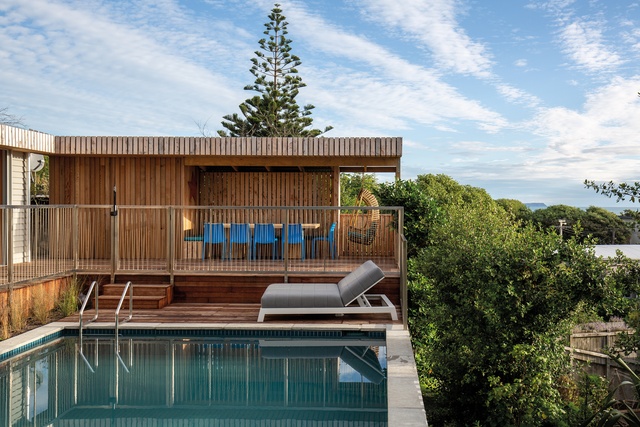
This is a masterful transformation by the architects and builder Bill Duncan: strikingly modern and filled with light and rich, natural colours. Outside, by the front door, a gorgeous, colourful Jan van Huysum artwork prepares you; this is no ordinary house. A bare concrete-block outside wall sits comfortably next to mill-finished aluminium cladding.
Rimu studs from the old home have been carefully recycled and crafted into a new front door. Where the old lean-to was previously situated, a gallery of art welcomes you – with a giant skylight watching over the tapestry of artworks within. The rich, red grain of the kwila staircase slices upwards, contrasting with the demure poplar ply walls of the entry gallery.
The old house is subsumed by newness and light; more than an alteration, this is a rebirth! The central gable roof of the original cottage now has two wings where once it had just one. The living room has been opened right up to maximise the expansive views. New decks surround and wrap around the refurbished outdoor pool and a new two-storeyed, cedar-clad tower wing, which has arisen in the backyard.
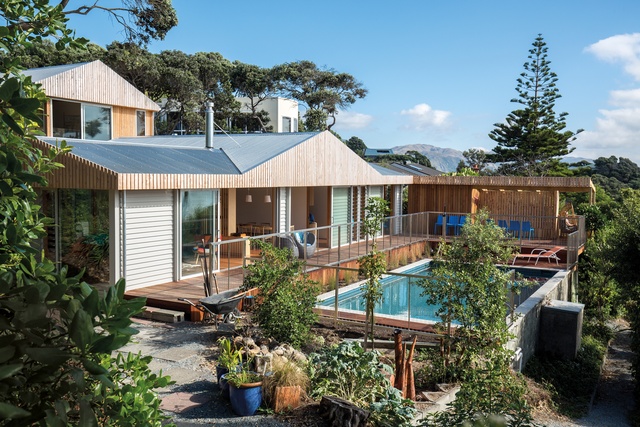
The forms are all carefully finished with a projecting macrocarpa timber rainscreen, subtly backlit at night to create a warm, indirect glow. Roofs clad in corrugated aluminium have matching shiny aluminium flashings and silver anodised window joinery. This keeps the palette of materials simple and fresh, like a piece of sumptuous French cooking: just the best crisp, raw ingredients and a limited-but-luxurious selection of finishes.
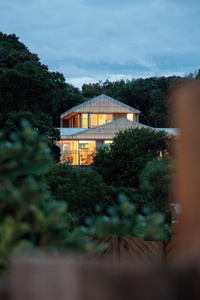
The influence of the clients comes through strongly, especially with Deanna’s love of the colour blue – visible in different shades within the bathroom’s mosaic wall tiles, the kitchen cupboards and, of course, the sea and sky outside.
With a project like this, the natural elements are a huge influence – viewshafts carefully encapsulate the views and the house is completely transparent from certain vantages. A ripe-orange Pyroclassic fireplace sits pride of place in the living room, heating the house effortlessly. Lighting is soft and indirect, courtesy of sleek, minimal LED strips.
The main bedroom is upstairs in the tower and looks down over the house and out to sea. Finishes here are carefully refined: just poplar plywood, frosted, glazed clerestory windows to the blue bathroom behind, and a characteristically cunning bedhead/storage unit, ensuring that the bedroom concentrates on the trees and the sky.
Despite the busy sinews of the nearby trees, the home exudes a feeling of calm and peacefulness: the perfect rest. And, best of all, it accommodates very happy residents.
Material Selector
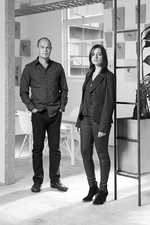
Architect William Giesen explains how the materials chosen respond to the environment.
Are the roof and rear façade made from the same corrugated aluminium and, if so, why?
Yes, they are both constructed from mill-finished corrugated aluminium because it will not rust even when it is close to the sea. Also, we wanted a low-maintenance product on the southern walls of the house. We like the highly reflective surface that contrasts with the more-sombre timbers that dominate the rest of the exterior.
What was your idea behind combining this with timber, including gutter edging that lines up with the timber cladding?
We aimed to create the house as a series of crisp gable forms that hover in the landscape. All the materials accentuate the vertical nature of the volumes.
Why did you choose the different timbers, such as cedar and macrocarpa?
Cedar as a cladding can’t be beaten for its stability and longevity while macrocarpa is used on the decorative elements. Over time, the different weathering of the different timbers will add texture to the overall form.

